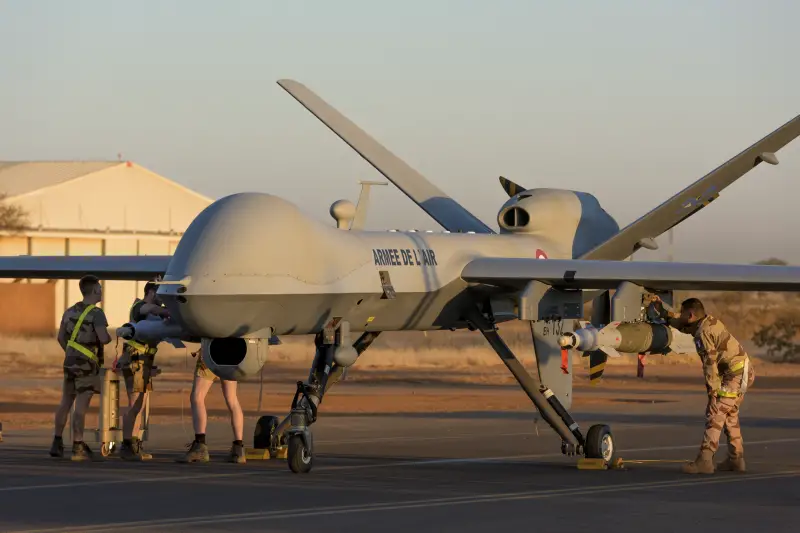The French military have successfully carried out firing trials with drones operating from Niamey air base in Niger, as part of Operation Barkhane. In a statement published Thursday, December 19, the Minister of the Armed Forces, Florence Parly, “hailed all the personnel of the Ministry of the Armed Forces who were fully involved” in the flight trials validating armed capabilities of drones. In addition, the drones will be piloted by personnel deployed in the overseas theater of operations, in this case as part of Barkhane force. The armed drones will usefully supplement assets available in the Sahelo-Saharan strip. They will remain mainly devoted to surveillance and intelligence.
The permanent connection to the decision-making process (C2: command and control) of the operation (which is the responsibility of the operation commander), reinforces the perception with a view to making the right decision. Beyond the fact that the operators will always be involved, they are thus embedded – from the preparation of the mission and until its debriefing – with the forces with which they interact during the mission. The rules of engagement of armed drones will obviously respect the principle of proportionality set out in international humanitarian law (principles of distinction, necessity, proportionality, precaution and humanity).

The nature and use of armed drones is no different from that of manned armed aircraft. These armed drones will complement the force’s current capabilities with an opportunity action capability, combined with the drone’s ability to persist. Their main missions remain surveillance and intelligence-gathering, which is the primary vocation of drones, but they can also be extended to include airstrikes in compliance with the rules of engagement. Discreet, enduring, armed drones will also shorten the time between identifying the enemy, making decisions and eventually destroying them.
The French Air Force has two MALE (Medium Altitude, Long Endurance) Reaper drone systems (3 drones each), one of which has been permanently deployed in the Sahel since 2016. Two additional Reaper systems will be delivered in two stages, starting in early 2020. Each drone will be able to carry up to four 250 kg GBU-12 laser-guided bombs, which are already used by combat aircraft. The last two Reaper drones to be delivered (Block 5 standard aircraft) will have full weapon capacity from the end of 2020: in addition to GBU-12 bombs, they will also be able to use Hellfire air-to-ground missiles (by end of 2020) and GBU-49 bombs (in 2021).
















